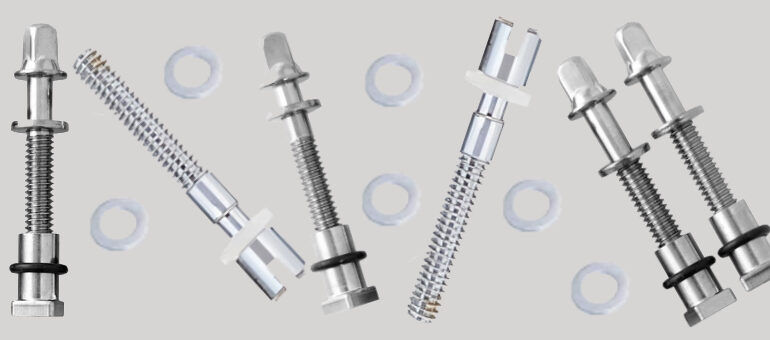Centering plate: Understanding This Manufacturing Process
- indgirka
- Jul 30, 2024
- 3 min read
In the industrial industry, efficiency and precision are essential. In addition to all these necessary components, there is one more crucial item that facilitates everyone's achievement of these objectives: centering plates. These manufacturers do have a significant impact on several industries, including aerospace and automotive.
So, for more ideas, let’s have a look at this blog & understand the manufacturing process explained by Centering Plate Manufacturer. This post will delve into what centering plates are, their importance, the manufacturing processes involved, and their applications.

What is a Centering Plate?
This is a component that is used to align & position parts or materials accurately during the manufacturing process. Apart from this, it ensures that the workpieces are correctly centered, which is essential for achieving high precision in the final product.
Other than this, centering plates are often used in conjunction with other tools & machinery such as jigs, fixtures, clamps, etc.
Importance of Centering Plates
Both accuracy and precision
Ensuring accuracy and precision in manufacturing is one of the main goals of employing centering plates. Component alignment must be done correctly, especially in industries where even a small misalignment can cause serious problems.
Continuity: Setting plates in the centre aids in preserving manufacturing consistency. Manufacturers may create identical parts with few variances by making sure that each workpiece is positioned precisely.
Productivity: By reducing the setup time required for aligning workpieces, centering plates improve manufacturing efficiency. Consequently, this may lead to reduced expenses and increased output.
Quality Assurance: By using centering plates to precisely line objects, improved quality control can be achieved. It guarantees that the final goods meet all requirements and lowers the likelihood of errors.
Manufacturing Processes Involved
To guarantee that centering plates fulfill the requirements and standards, several steps are involved in their fabrication. These are the crucial steps you need to take:
Created & Engineered: The engineering and design phase of the production process comes first. Engineers give comprehensive drawings and specifications at this stage, taking into account the particular needs of the application. The key to this procedure is choosing the appropriate materials, parameters, and tolerances.
Selection of Materials: The right material selection is crucial for centering plates to function properly and last long. It’s because if they will work properly only then it would become possible to cope up with decision-making factors include the application's load-bearing requirements, budget, and environmental circumstances.
Making and Remaking Sculptures: Once the design is finished, the raw material needs to be cut and shaped to the appropriate dimensions. There are several methods you can accomplish this, including:
-Using CNC Machining One popular application for Computer Numerical Control (CNC) equipment is high-precision centering plate cutting and shaping. CNC machines follow preprogrammed instructions to create the required shapes and measurements.
-Cutting using a laser: Utilizing laser cutting is an additional method for accurately aligning plates. It slices through the material with a strong laser to produce accurate and tidy cuts.
-Utilizing a high-pressure water jet loaded with abrasive particles, waterjet cutting creates thin slices through the material. Thicker materials and complex shapes cut well with it.
Thermal Modification
Heat treatment is applied during the manufacturing process to enhance the mechanical properties of the centering plates. When the substance reaches a specified temperature, it is rapidly cooled. This process improves the hardness, strength, and durability of the plates.
Final Surface Coating
In order to enhance the look and functionality of centering plates, surface cleaning is required. Other methods that are available for usage are:
Creating a precise, smooth surface finish is the aim of grinding. There are no sharp edges or flaws on the plates.
Polishing has two primary purposes: it brightens the plates and enhances their surface finish. It is often employed for aesthetic purposes.
Applying coating: To extend the life of the centering plates and prevent corrosion, a protective layer such as paint or powder coating can be applied.
Inspections and Quality Control
Only via quality control and inspection will the centering plates be able to meet the relevant standards and specifications. We conduct several assessments and experiments, including:
As part of the dimensional inspection procedure, measurements of the plate dimensions are made to ensure that the tolerances are fulfilled.
Through material testing, the mechanical properties of the plates—such as their strength and hardness—are confirmed.
Surface inspection is the process of examining the plates for defects like as fractures, dents, and scratches.
Conclusion
This particular feature conveys to all parties involved the idea that centering plates are essential tools for maintaining efficiency, accuracy, and uniformity throughout the manufacturing process. Every stage of their manufacturing process—from design and material selection to cutting, shaping, heat treatment, and quality control—is essential to obtaining the required durability and performance.
Other than this, you can arrange a session with us to get the specific details if you'd like to know more.





Comments